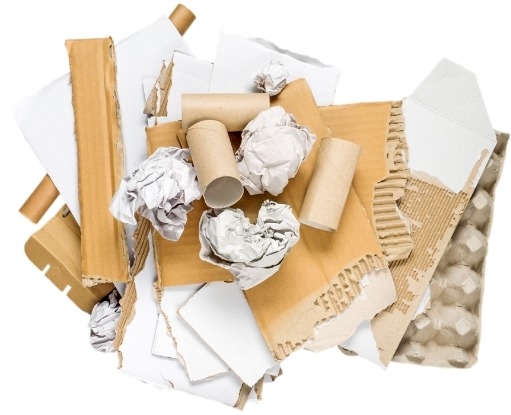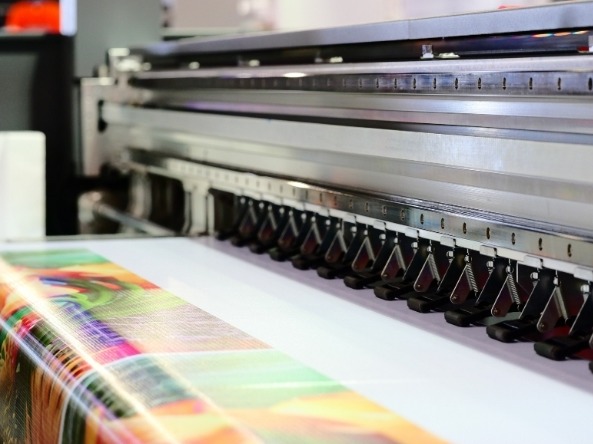Environmental Sustainability in Direct Mail: A 2024 Perspective
The importance of environmental sustainability is a hot topic currently, and for good reason. As global awareness of environmental issues continues to rise, consumers are making purchasing decisions based on ethical and sustainable practices. This shift is driven by a growing consumer preference for eco-friendly products and a heightened awareness of the environmental impact of consumption patterns.
Let’s break down a few ways you’ll see sustainable practices in B2B direct mail in 2024.
Eco-friendly printing practices
An important part of environmental sustainability is printing methods and materials. The aim is to minimize the environmental impact of the products and encourage consumers to make more sustainable choices. Here are a few sustainable printing methods and materials you can start to explore for your business this year:
Printing methods
Digital printing:
Digital printing requires less setup and generates less waste compared to traditional printing methods like offset printing. With digital printing, you have the flexibility of on-demand printing, which not only reduces excess inventory but also minimizes resource use.
UV printing:
UV printing uses ultraviolet light to dry ink quickly, reducing the emission of volatile organic compounds (VOCs). It is more energy efficient and produces vibrant prints without the need for additional chemicals.
Waterless printing:
Waterless printing revolutionizes the printing process by eliminating the need for water, resulting in reduced water consumption and minimizing the risk of water pollution.
Materials
Eco-solvent inks:
Eco-solvent inks are formulated with fewer volatile organic compounds, reducing air pollution. They are commonly used in large format and outdoor printing.
Recycled paper:
Using recycled paper, made from post-consumer waste or pre-consumer waste, reduces the demand for new raw materials and lessens the environmental impact associated with paper production.
Did you know that recycling one ton of paper saves roughly 17 trees, nearly 400 gallons of oil, and over 7,000 gallons of water? At Aradius Group we’re able to recycle close to 80 tons per month!

FSC®-Certified paper:
Forest Stewardship Council (FSC®) certification ensures that the paper comes from responsibly managed forests. This certification promotes sustainable forest practices, biodiversity conservation, and the production of indigenous rights.
Since 2008, Aradius Group has maintained an FSC® certification by supporting their mission to promote the environmentally sound, socially beneficial, and economically prosperous management of the world’s forests.
As an FSC® certified printer, we can verify and source paper that was harvested sustainably. Consider using FSC® certified paper in your next print project to help support responsible sources and proper forestry management.
Biodegradable and compostable materials:
Some printing materials, such as packaging and promotional items, can be made from biodegradable or compostable materials, reducing their environmental impact at the end of their lifecycle.
Adopting sustainable printing methods and materials not only helps reduce the environmental footprint of the printing industry but also aligns with the growing demand for eco-friendly practices from businesses and consumers alike.

Carbon neutral and offset programs
When it comes to implementing sustainable efforts, you’ll want to look at implementing carbon-neutral or offset programs in your B2B marketing. A carbon offset program lets individuals and companies invest in environmental projects around the world to balance out their carbon footprints. You’ll find that some companies look to offset their carbon footprint, while others may aim to neutralize their impact.
Here are steps to effectively integrate carbon neutral and offset programs into B2B marketing:
Carbon offset assessment:
Before you can even begin to offset your carbon footprint, you need to look at your company’s carbon footprint. Identify and measure the greenhouse gas emissions generated by your operations, including manufacturing, transportation, and energy consumption.
Set carbon offset goals:
The data from your carbon offset assessment will allow you to set realistic carbon offset goals. Determine the amount of emissions you aim to offset and establish a timeline for achieving these targets.
Pick your carbon offset project:
You’ve collected the data and set a goal – now it’s time to decide what reputable carbon offset project aligns with your company’s values and can help make an impact. Projects you consider could include renewable energy initiatives, reforestation efforts, or methane capture programs.
At Aradius Group, we work with paper mills and suppliers who responsibly manage their work processes and our forests. We also collaborate with a local recycling partner to recycle all our paper waste.
Communicating sustainability to customers
Once you have your carbon neutral and offset plans situated, it’s important to be transparent with your customers and potential customers. Effectively communicating sustainability initiatives to customers will help foster a positive brand image and help meet the expectations of an environmentally conscious consumer base. Here are a few ways you can make sure you're communicating properly:
- Feature eco-friendly certifications and labels on packaging and promotional materials.
- Communicate specific green practices and achievements, utilizing metrics to highlight the impact of your sustainability efforts.
- Share your sustainability story through compelling narratives that resonate with customers.
- Leverage digital platforms and social media to regularly update customers on ongoing sustainability projects, encouraging engagement and participation.
By seamlessly integrating these elements into marketing materials, businesses can authentically communicate their dedication to sustainable practices and resonate with environmentally aware consumers.
The takeaway
Environmental sustainability plays a pivotal role in shaping B2B direct mail practices by inspiring an important shift toward eco-conscious strategies. Businesses are recognizing the importance of minimizing their environmental footprint and are adopting sustainable printing methods, materials, and messaging. This shift not only meets the evolving expectations of environmentally aware B2B partners but also enhances brand reputation and competitiveness in a market where responsible practices are becoming integral to success.
By integrating sustainability into B2B direct mail, companies contribute to a greener business ecosystem, showcasing a commitment to both environmental stewardship and the long-term viability of their operations. if you’re looking for a printer that cares about being eco-friendly, reach out to Aradius Group! We’d love to help bring your next direct mail campaign to life.
Our sustainability efforts are constantly growing here at Aradius Group. You can check out our PDF below to see how we're currently doing our part and how we plan to grow as a company.


